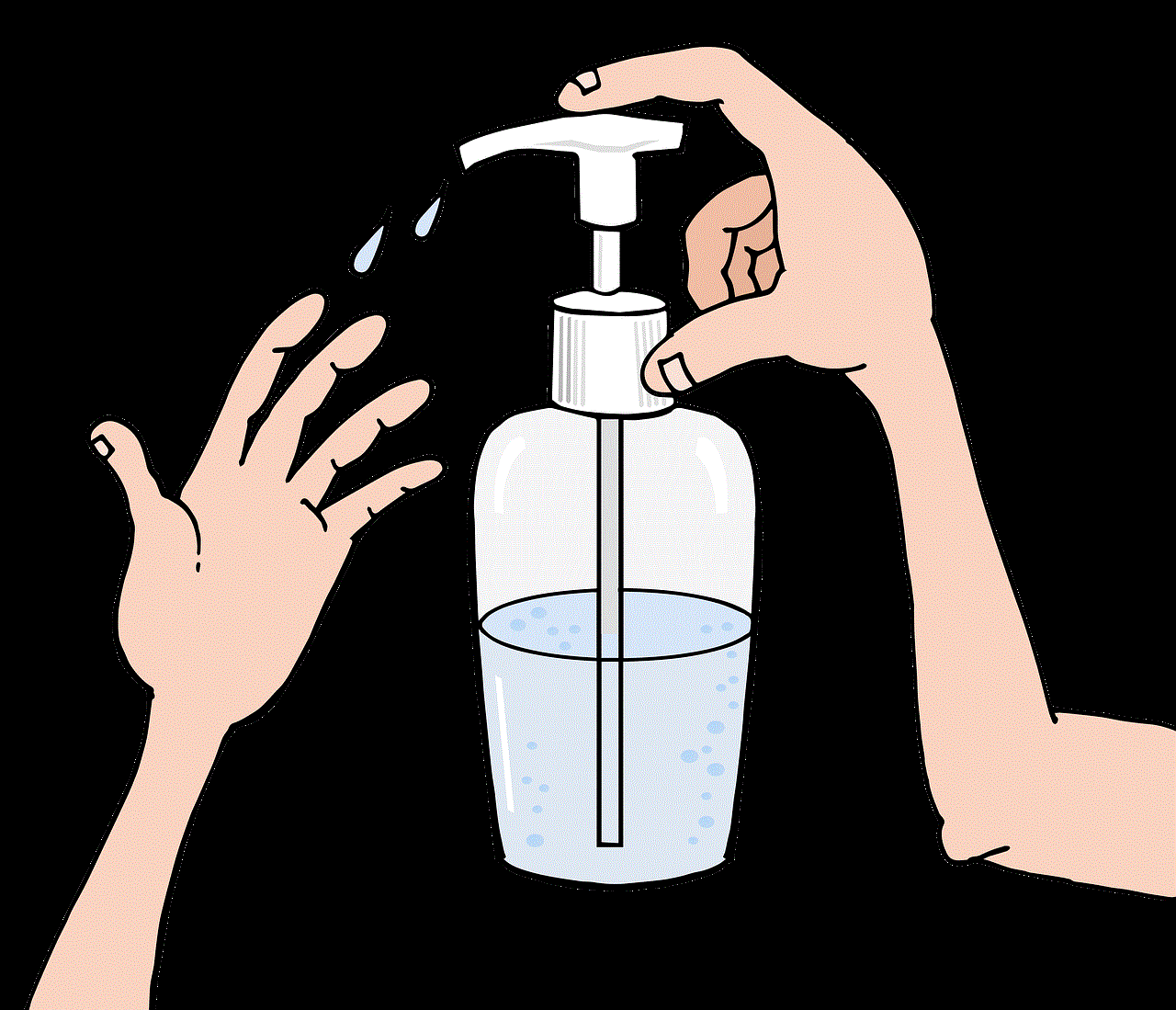facebook story screenshot notification
Title: The Rise of facebook -parental-controls-guide”>Facebook Story Screenshot Notifications: Enhancing User Privacy and Security
Introduction:
In the ever-evolving world of social media, Facebook has emerged as a dominant player, constantly introducing new features to enhance user experience. One such feature is the introduction of Facebook Story Screenshot Notifications. This article explores the significance and impact of this development, shedding light on how it benefits users by enhancing their privacy and security on the platform.
Paragraph 1:
Facebook Stories have gained immense popularity since their launch, allowing users to share their day-to-day moments with their friends and followers. However, the transient nature of these stories raised concerns among users regarding the privacy of their content. Facebook’s response to this concern came in the form of Story Screenshot Notifications, aiming to address user anxieties and provide a more secure environment.
Paragraph 2:
The introduction of Story Screenshot Notifications marks a significant shift in Facebook’s approach towards user privacy. Previously, users were unaware when their stories were captured via screenshots, leaving them vulnerable to potential misuse or unauthorized distribution. With this new feature, users are now instantly notified when someone takes a screenshot of their story, giving them more control over their shared content.
Paragraph 3:
The primary purpose of Facebook Story Screenshot Notifications is to discourage the unauthorized capture and distribution of users’ stories. By providing an instant alert, this feature acts as a deterrent, discouraging individuals from taking screenshots without consent. Since users are now aware of any such actions, they can take necessary steps to protect their privacy or address any potential misuse.
Paragraph 4:
Moreover, the introduction of this feature also promotes responsible social media behavior. By alerting users about the act of screenshotting, Facebook encourages individuals to respect privacy boundaries and encourages ethical sharing practices. This shift towards a more respectful and responsible online community cultivates a healthier and more inclusive environment for users.
Paragraph 5:
Facebook Story Screenshot Notifications are not only beneficial for individual users but also for brands and influencers who utilize the platform for marketing purposes. This feature provides them with an additional layer of security, ensuring that their shared content remains protected from unauthorized use or distribution. Brands and influencers can have peace of mind knowing that their stories are being safeguarded, allowing them to focus on engaging with their audience.
Paragraph 6:
Despite the benefits, there are also concerns regarding the potential drawbacks of Facebook Story Screenshot Notifications. Some users feel that this feature restricts their ability to capture and share content freely. While it is true that the feature may limit the free flow of content, it also encourages users to seek permission before capturing and sharing someone else’s story, leading to a more respectful and consent-driven online community.
Paragraph 7:
The introduction of Story Screenshot Notifications also raises questions about its effectiveness in preventing unauthorized content distribution. While the feature serves as a deterrent, it cannot completely eliminate the possibility of screenshots being taken and shared. However, by instantly notifying users about such actions, Facebook enables individuals to take appropriate measures to address potential privacy breaches.
Paragraph 8:
Facebook has also taken steps to ensure that the Story Screenshot Notification feature is user-friendly. The notifications are discreet, appearing only to the user whose story was captured, and are not visible to the person who took the screenshot. This design choice helps maintain the integrity of the feature, preventing it from being misused for retaliation or causing unnecessary conflicts between users.
Paragraph 9:
Furthermore, the introduction of this feature demonstrates Facebook’s commitment to continuously improving user experience and responding to user concerns. By actively addressing privacy and security issues, Facebook strengthens its user base’s trust, fostering a positive relationship between the platform and its users. This proactive approach reflects the platform’s dedication to creating a safe and secure social media environment.
Paragraph 10:
In conclusion, the introduction of Facebook Story Screenshot Notifications represents a significant step towards enhancing user privacy and security on the platform. By instantly alerting users about the act of taking screenshots, Facebook empowers individuals to have greater control over their shared content. This feature encourages responsible sharing practices, cultivates a more respectful online community, and provides additional security for brands and influencers. Despite some concerns, Facebook’s proactive approach demonstrates its commitment to improving the overall user experience and fostering a safer social media environment.
tomodachi game age rating
Tomodachi Game is a popular Japanese manga series written and illustrated by Mikoto Yamaguchi. The series, which was first published in 2014, has gained a huge following not only in Japan but also in other parts of the world. The story revolves around a group of high school students who are forced to participate in a twisted game by a mysterious organization. The game is all about betrayals, backstabbing, and survival, making it a thrilling and intense read. With its dark themes and graphic violence, many readers are curious about the age rating of Tomodachi Game. In this article, we will delve deeper into the series and explore its age rating.
Before we jump into the age rating of Tomodachi Game, it is important to understand the concept of age ratings in manga. Unlike movies and TV shows, manga does not have a universal age rating system. Instead, publishers and distributors decide on the appropriate age rating based on the content of the manga. In Japan, the publishers follow a voluntary rating system called the “Publication Ethics Concerning Comics” to determine the appropriate age rating for their manga. This system has four ratings: All Ages, Age 13+, Age 15+, and Age 18+. Let’s take a closer look at these ratings and how they apply to Tomodachi Game.
All Ages rating is given to manga that are suitable for all readers, regardless of their age. These manga have no explicit violence, sexual content, or mature themes. They are usually light-hearted and have a comedic tone. Examples of All Ages rated manga include Doraemon and Yotsuba&!, which are popular among children and adults alike. As for Tomodachi Game, it definitely does not fall under this category. The series is known for its dark and violent themes, making it unsuitable for younger readers.



The Age 13+ rating is given to manga that may contain mild violence, some sexual content, and mature themes. However, these elements are not too graphic or explicit. This rating is similar to PG-13 in movies. The characters in these manga are usually teenagers, and the stories revolve around their struggles and coming of age. Some examples of Age 13+ rated manga are Haikyuu!! and My Hero Academia. So, does Tomodachi Game fit in this rating? While the series does have teenage characters and touches upon themes of friendship and betrayal, it goes beyond mild violence and contains explicit violence and gore, making it unsuitable for readers below 15 years old.
The Age 15+ rating is given to manga that may contain graphic violence, strong language, sexual content, and mature themes. These elements are more explicit and intense compared to Age 13+ rated manga. This rating is similar to R-rated movies. Manga with this rating often have a more serious and mature tone. Some examples of Age 15+ rated manga are Attack on Titan and Tokyo Ghoul. As for Tomodachi Game, it definitely falls under this category. The series has graphic violence and gore, along with mature themes such as manipulation and death. These elements make it unsuitable for readers below 15 years old.
The Age 18+ rating is given to manga that contain extreme violence, explicit sexual content, and mature themes. These manga are not suitable for younger readers and are often categorized as “adult” manga. The stories in these manga are usually dark and gritty, exploring more taboo topics. Some examples of Age 18+ rated manga are Berserk and Gantz. In terms of age rating, Tomodachi Game is closer to Age 18+ than any other rating. The series has explicit violence, including torture and murder, and also touches upon mature themes such as suicide and sexual assault.
Now that we have a better understanding of the ratings in Japan, let’s take a closer look at the age rating of Tomodachi Game in other countries. In North America and Europe, manga publishers and distributors follow a similar rating system, with some slight differences. In North America, manga is rated by the Entertainment Software Rating Board (ESRB), which also rates video games. The ratings are: Early Childhood, Everyone, Everyone 10+, Teen, Mature, and Adults Only. Similarly, in Europe, manga is rated by the Pan European Game Information (PEGI), which also rates video games. The ratings are: 3, 7, 12, 16, and 18. These ratings are used to determine the appropriate age for readers to access the manga.
So, what is the age rating of Tomodachi Game in North America and Europe? In North America, the series is rated as Mature, which means it is suitable for readers aged 17 and above. In Europe, the series is rated as 16, meaning it is suitable for readers aged 16 and above. These ratings are in line with the Japanese rating of Age 15+. However, it is worth noting that these ratings are not legally binding, and parents and guardians should still use their discretion when allowing their children to read manga with these ratings.
In conclusion, the age rating of Tomodachi Game is not suitable for younger readers. The series contains explicit violence, mature themes, and graphic content, which may not be suitable for children and teenagers. The Japanese rating of Age 15+ and the North American and European ratings of Mature and 16, respectively, are a clear indication that the series is intended for a more mature audience. As with any form of media, parents and guardians should use their discretion and be aware of the content before allowing their children to read Tomodachi Game.
how to get a refund on itunes music
If you have recently made a purchase on iTunes for music and are dissatisfied with your purchase, you may be wondering how to get a refund. Whether you accidentally bought a song or album, or simply changed your mind about your purchase, you may be eligible for a refund from iTunes. In this article, we will discuss the steps you can take to get a refund on iTunes music.
1. Check the eligibility for a refund
Before you attempt to get a refund on your iTunes music, it is important to check if you are eligible for a refund. According to Apple’s iTunes Store Terms and Conditions, all purchases made on the iTunes Store are final, with a few exceptions. These exceptions include accidental purchases, duplicate purchases, and defective or damaged purchases. If your situation falls under one of these categories, you may be eligible for a refund.
2. Request a refund through iTunes
The first step to getting a refund on iTunes music is to request it through iTunes. To do this, open iTunes on your computer and click on the “Store” tab at the top of the screen. From there, click on “Account” and then “Purchase History.” Find the music purchase that you would like a refund for and click on the “Report a Problem” button next to it. Follow the prompts to submit your request for a refund.



3. Request a refund through the Apple website
If you are unable to request a refund through iTunes, you can also do so through the Apple website. To do this, go to the Apple website and click on “iTunes Store” at the top of the page. Scroll to the bottom of the page and click on “Account.” Sign in with your Apple ID and password, then click on “See All” under the “Purchase History” section. Find the music purchase you would like a refund for and click on the “Report a Problem” link next to it. Follow the prompts to submit your request for a refund.
4. Contact iTunes Support
If you are still having trouble getting a refund through iTunes or the Apple website, you can contact iTunes Support for further assistance. You can do this by going to the iTunes Support website and clicking on “Contact Support” at the bottom of the page. From there, select the “iTunes Store” category and click on “iTunes Store Account and Billing.” Finally, select the “Request a refund” option and follow the prompts to submit your request.
5. Provide necessary information
When requesting a refund, it is important to provide as much information as possible to support your claim. This may include your order number, the date of purchase, the name of the song or album, and the reason for your request. The more information you can provide, the better your chances of getting a refund.
6. Be patient
It may take some time to receive a response from iTunes or Apple regarding your refund request. It is important to be patient and wait for their response before taking any further action.
7. Check your payment method
If you paid for your iTunes music purchase using a credit or debit card, the refund will be credited back to that same card. If you paid using a gift card or store credit, the refund will be credited back to your iTunes account.
8. Follow up if necessary
If you have not received a response from iTunes or Apple regarding your refund request, you may need to follow up with them. You can do this by contacting iTunes Support again or by reaching out to them through their social media channels.
9. Consider contacting your bank
If you have not received a refund after following the above steps, you may want to contact your bank or credit card company. They may be able to assist you in getting a refund, especially if you have not received a response from iTunes or Apple.



10. Learn from the experience
If you were able to successfully get a refund on your iTunes music, take this as a learning experience. Be more careful when making purchases in the future and double check your selections before completing the transaction.
In conclusion, getting a refund on iTunes music is possible, but it may require some effort and patience on your part. By following the steps outlined in this article, you can increase your chances of getting a refund for your music purchase. Remember to provide as much information as possible, be patient, and follow up if necessary. And in the future, be more cautious when making purchases on iTunes to avoid the need for a refund.